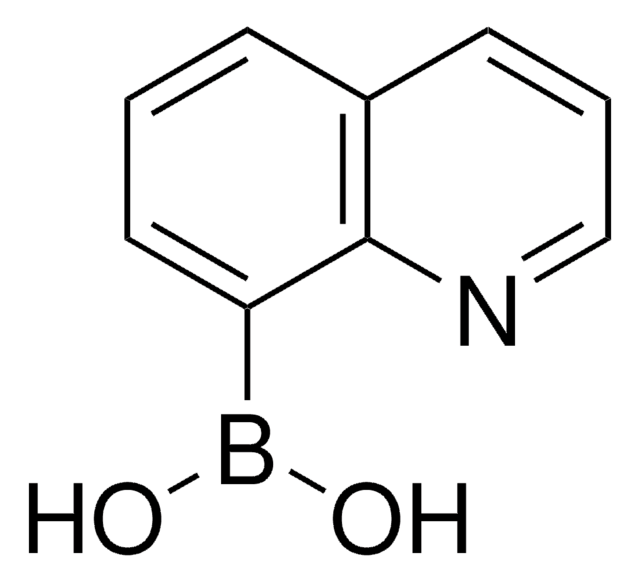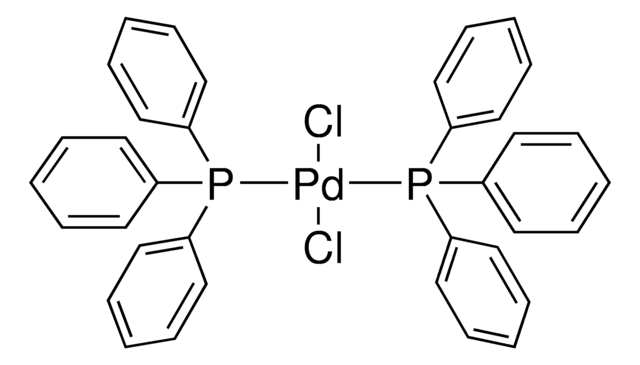691909
3-Quinolineboronic acid
technical grade
Synonym(s):
(3-Quinolinyl)boronic acid, (3-Quinolyl)boronic acid, Quinolin-3-ylboronic acid
Sign Into View Organizational & Contract Pricing
All Photos(1)
About This Item
Empirical Formula (Hill Notation):
C9H8BNO2
CAS Number:
Molecular Weight:
172.98
MDL number:
UNSPSC Code:
12352103
PubChem Substance ID:
NACRES:
NA.22
Recommended Products
grade
technical grade
form
powder
mp
191-196 °C
storage temp.
2-8°C
SMILES string
OB(O)c1cnc2ccccc2c1
InChI
1S/C9H8BNO2/c12-10(13)8-5-7-3-1-2-4-9(7)11-6-8/h1-6,12-13H
InChI key
YGDICLRMNDWZAK-UHFFFAOYSA-N
Looking for similar products? Visit Product Comparison Guide
Application
Reactant for:
- Preparation of P1-substituted symmetry-based human immunodeficiency virus protease inhibitors with antiviral activity against drug-resistant viruses
- Preparation of heterobiaryls via Suzuki-Miyaura cross-coupling with heteroaryl halides in continuous flow
- Preparation of Ph and heterocyclic(pyridinyl)pyrazolyl)pyridines as TGF-1 and activin A signalling inhibitors
- Copper-mediated trifluoromethylation
- Synthesis and bioactivity of combretastatin analogs via regioselective Suzuki coupling of dihaloheteroaromatic compounds
- Suzuki-Miyaura cross-coupling reactions
May contain varying amounts of anhydride.
Signal Word
Warning
Hazard Statements
Precautionary Statements
Hazard Classifications
Eye Irrit. 2 - Skin Irrit. 2 - STOT SE 3
Target Organs
Respiratory system
Storage Class Code
11 - Combustible Solids
WGK
WGK 3
Flash Point(F)
Not applicable
Flash Point(C)
Not applicable
Personal Protective Equipment
dust mask type N95 (US), Eyeshields, Gloves
Choose from one of the most recent versions:
Already Own This Product?
Find documentation for the products that you have recently purchased in the Document Library.
Manabu Nakazono et al.
Clinica chimica acta; international journal of clinical chemistry, 436, 27-34 (2014-05-13)
Various styrylbenzene compounds were synthesized and evaluated as mainly Aβ amyloid sensors. These compounds, however, cannot be used for detecting amyloid deposition in peripheral nerves because of the inherent sensitivity of the compounds. These compounds often generate false positives especially
Our team of scientists has experience in all areas of research including Life Science, Material Science, Chemical Synthesis, Chromatography, Analytical and many others.
Contact Technical Service







![Benzo[b]thien-3-ylboronic acid ≥95.0%](/deepweb/assets/sigmaaldrich/product/structures/136/961/9ddc053e-3519-47d3-be03-95715d131635/640/9ddc053e-3519-47d3-be03-95715d131635.png)

